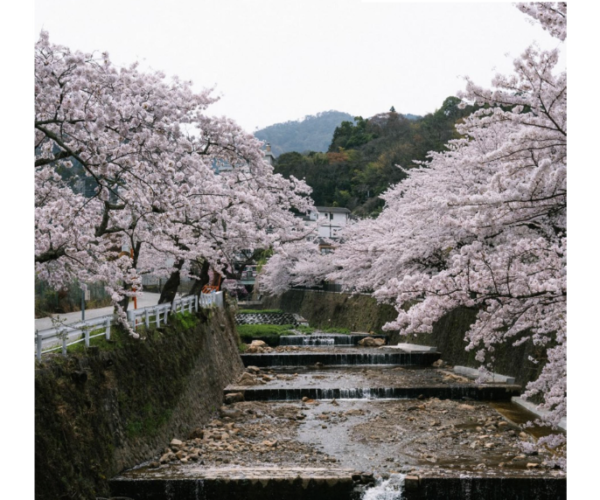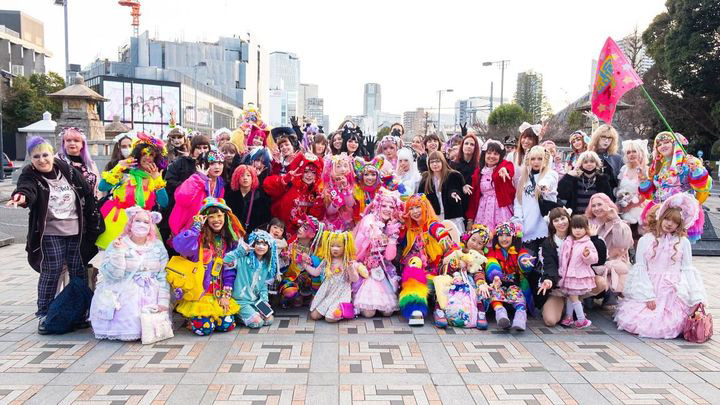International Fans Keep the Community Alive
This article was originally featured in the October 2024 issue of Connect.
Sabrina Greene (Chiba)
Rey Takahashi (Chiba)
“Harajuku Is Not Dead,” declare four kanji—原宿不滅 (harajuku fumetsu)—hand-cut and pasted with care on a bright pink flag. In the May 24, 2024 photo, two people drowning in rainbow adornments display the flag on a busy Harajuku street corner. Even without the flag, it would be hard to miss their iridescent cloud of colorful tubes, tutus, and hair clips.
Such sights, while rare elsewhere, are commonplace in Harajuku. Rey Takahashi, fashion aficionado, fondly describes the area’s diversity. “You get to meet people with so many different styles [there],” he says. “There’s this one older Japanese gentleman who is very steampunk. He had a ferret scarf and a fox scarf.” Even young kids join the action, he says. “There’s an elementary-age girl who makes her own masks. She usually wears a dog face made from ceramic. It’s so cool. I love that this is still an option for young people living here.”
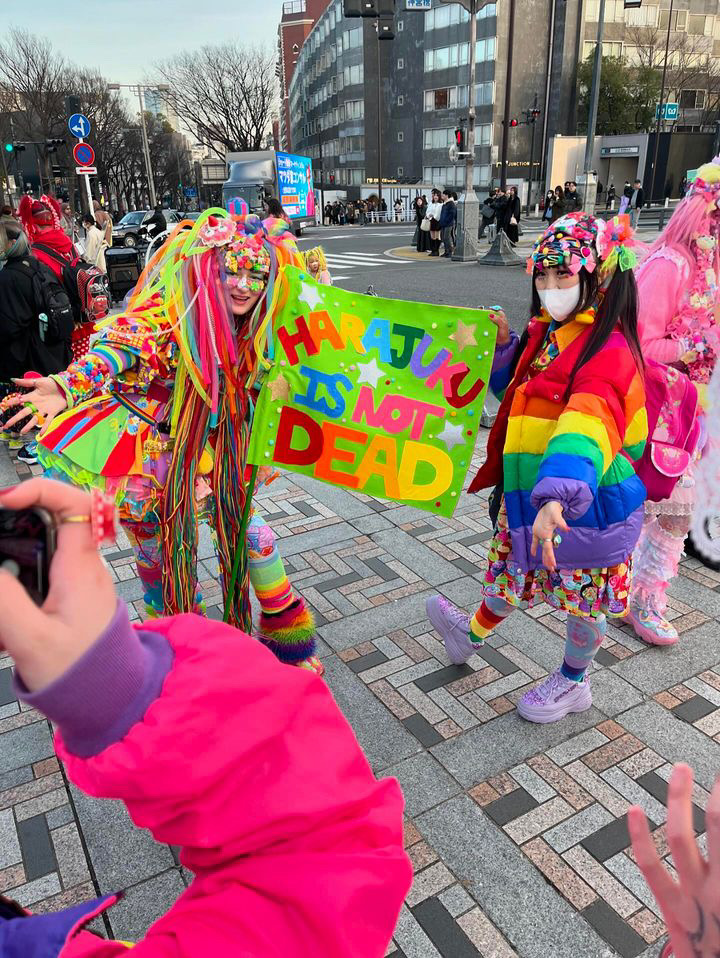
There are dozens of creative and convention defying fashion subcultures with roots in Harajuku. The area sprouted its first subcultural groups as early as the 1970s, when young people took to pedestrian areas like Takeshita-dori and Yoyogi Park’s 歩行者天国 (hokousha tengoku, pedestrian paradise) to see and be seen.
Although the pedestrian paradise was closed in 1998, fashion-forward youth were undeterred. According to Aoki Shoichi, founder of the iconic street fashion magazine FRUiTS, it was in the late 1990s that young people began to wear bright colors and incomprehensible styles, DIYing their one of a kind clothes. They dared to take risks that high fashion brands wouldn’t, like mixing Western and traditional kimono elements. Their vibrant palettes were in direct opposition to the monochrome styles of the era’s popular brands, like Comme des Garçons and Yohji Yamamoto. (1)
25 years later, Harajuku is a world-class tourist destination. Weekend visitors who hop off the JR Yamanote Line at Harajuku station will find Takeshita-dori packed with a river of people clamoring to see frilly lolitas, goths, and more.
Harajuku appears to be thriving. So why would the two flag-toting fashionistas feel the need to affirm its longevity?
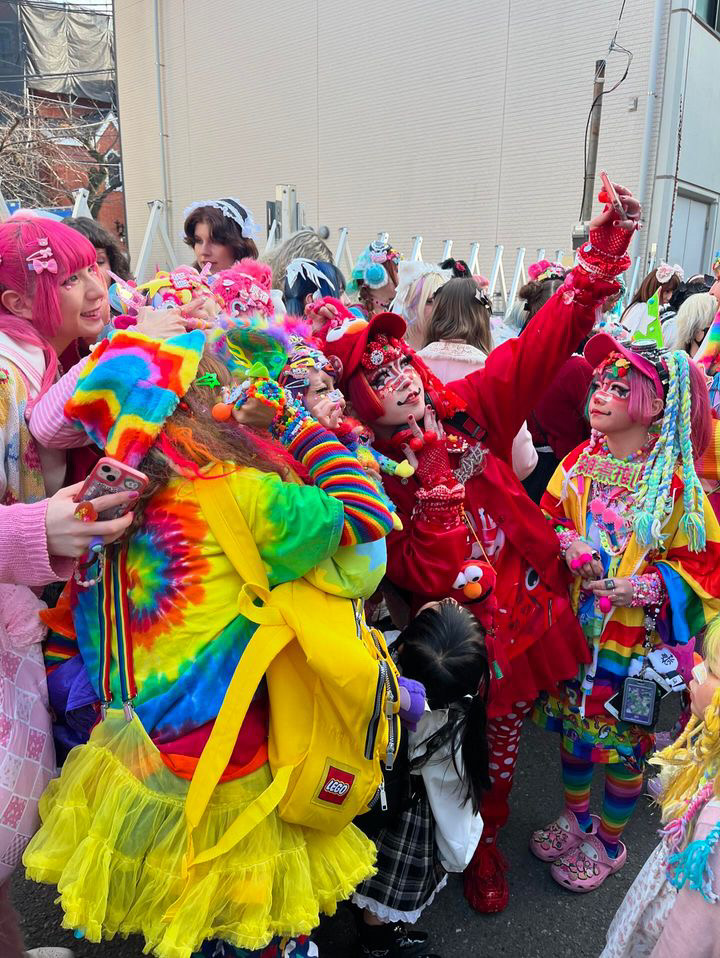
In the past 5 to10 years, discourse surrounding Harajuku fashion has posited that Harajuku is, in fact, dead. Perhaps the most influential voice in the conversation is the aforementioned photographer Aoki Shoichi. Though his publication, FRUiTS, had been one of the guiding lights among street fashion subcultures since 1985, Aoki shuttered it in 2017. The reason? “There are no more cool kids left to photograph.” According to Aoki, the kids in Harajuku lack the authenticity they had in the 1990s, when these subcultural conventions were nascent and undefined. (2)
Indeed, a visit to the area confirms that fast fashion retailers, trendy snack shops, and animal cafes have largely replaced the unique fashion brands that textured Harajuku. There’s an H&M near the entrance to Takeshita-dori; a UNIQLO sits right down the street, near an IKEA. The very young people who have historically driven the grassroots fashion rebellion seem to have sold their creative souls to the Big Guy. It’s easy to agree that Aoki’s authenticity has evaporated.
Rey Takahashi recognizes the area’s changed character. “Harajuku is becoming less what it used to be. There are less original designs—you could go into three stores and see the same shirts,” he says.
But Takahashi also illuminates a more optimistic view of Harajuku. Growing up in California, Takahashi first discovered Harajuku fashion online during his middle school days. Upon moving to Japan, Takahashi quickly became involved in the community. In January of this year, he attended his first fashion meetup with Harajuku Fashion Day (@harajukufashionday). “There’s the fashion walk, where we all walk around Harajuku doing our thing,” explains Takahashi. “Sometimes they also have picnics. Recently, they had an indoor arts and crafts day, which was so cute!” These monthly events are organized by three “fashionable foreigners,” all of whom are active in Harajuku.
Takahashi’s experience highlights the way international Harajuku fashion fans foster community in the area. “There are typically more foreigners [than Japanese attendees.] The picnic I went to was around 90% foreigners, but the walk usually gets a lot more people and more of an even mix, which is nice,” says Takahashi.
While local Japanese fashionistas are still vital trendsetters and irreplaceable parts of the community, the presence of non-Japanese people in Harajuku—in street snaps, as shop staff, as influencers, etc—has increased significantly in the past 10 years. For example, ACDC Rag, founded in 1993, has particularly embraced its foreign audience. (3) It features non-Japanese models on its Instagram, writes its post captions in English and Japanese, and employs non-Japanese shop staff.
Further, Harajuku fashion walks are held in places as far-flung as LA, the Netherlands, and Singapore. “Now you have people from abroad who get to see it and also have the fashion despite not being in Japan. They buy the things that people in Japan make and want to come to Japan,” says Takahashi.
Though Harajuku fashion has transcended its location, its locality remains important. It would be easy for Harajuku’s cool kids to follow the trends elsewhere in Tokyo, to places like Shimokitazawa or Koenji. But new subcultures, like tenshi kaiwai, constantly manifest in Harajuku. Dedicated foreign fans still make the pilgrimage to Harajuku mainstays like Cat Street, Ura-Harajuku, and Omotesando. Takahashi, too, says Harajuku remains in Harajuku. “It’s where you get to hang out and explore.”
“Harajuku is not dead. To say ‘Harajuku is dead’ is to ignore the way our interconnected world constantly co-creates, destroys, and rebuilds this thing called ‘culture.’”
From Takahashi’s testimony and the crowds of cool kids in Japan and abroad, it’s clear: Harajuku is not dead. To say “Harajuku is dead” is to ignore the way our interconnected world constantly co-creates, destroys, and rebuilds this thing called “culture.” The community of local creatives and passionate overseas fans have ensured Harajuku’s survival. Aoki Shoichi’s cool kids no longer exist as they did in 1997 because it’s no longer 1997; they were a product of their unique historical moment. But now, it’s 2024, an era of fast fashion and social media, both things which inform today’s fashion culture for better or for worse.
The thing that hasn’t changed, though, is people’s desire to express themselves. Takahashi says, “I’ve never felt creative when it comes to things like writing and drawing, even though I love them. So [fashion is] an easier way, at least for me, of creative expression.” As long as people remain inspired by Harajuku, its legacy will continue.
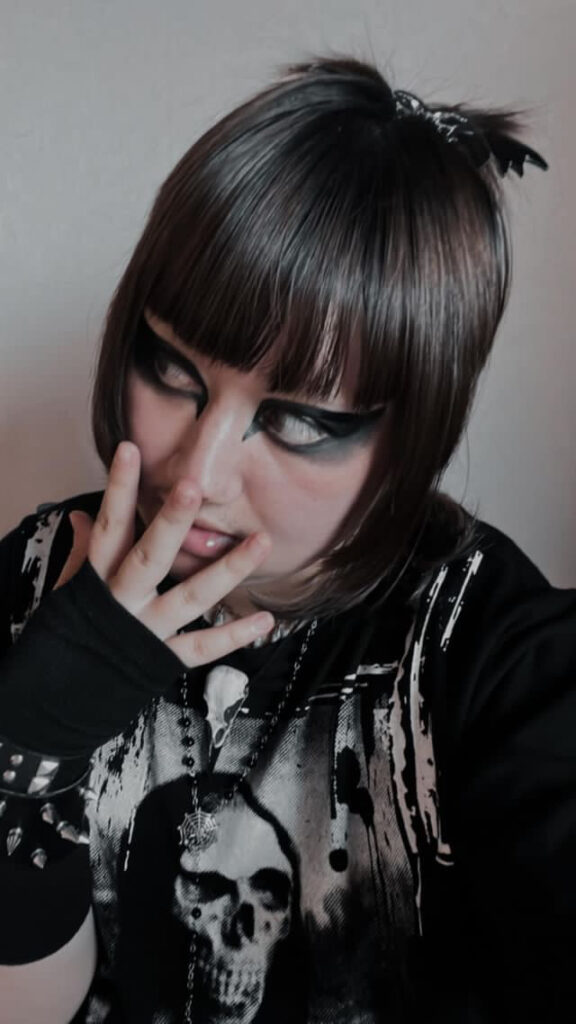
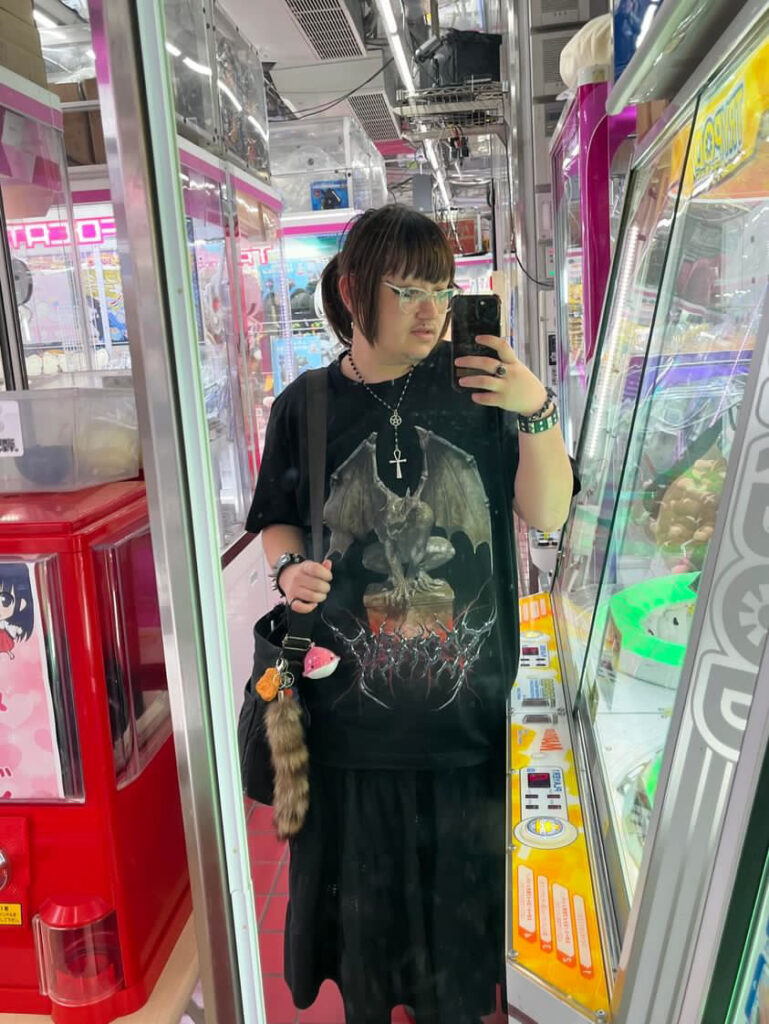
Rey Takahashi is a second year ALT living in Chiba Prefecture. His passions include all things horror and macabre, gothic/alternative fashion, and reading thriller books. As a queer person, they find joy and confidence in using fashion to demonstrate that a person’s appearance doesn’t always equal their gender identity.
Sabrina is the Fashion editor of CONNECT Magazine. She wrote her MA thesis on Harajuku fashion subcultures, and she’s excited to highlight Japan’s diverse fashion scene. She was born to cafe hop, thrift, and then have a cute little painting picnic in the park. She has already eaten all your hot Cheetos.



